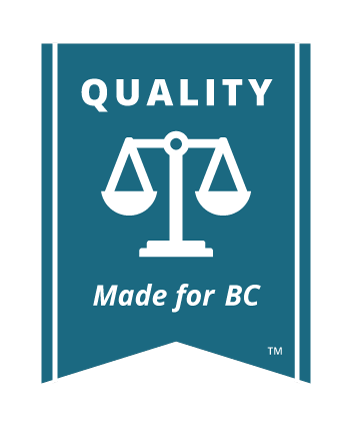Preparing Your Petition Response
The petition sets out certain information that you need to know. The petition will tell you:
- The style of proceeding and registry number. The style of proceeding (also called the “style of cause”) is how the court registry identifies your file (it includes the court file number, the name of the registry, the level of court, and the names of the parties). You must also include the style of proceeding on every document you prepare in the lawsuit
- The location of the registry where all subsequent documents must be filed
- The name and address of the person or lawyer who filed the petition
- The delivery address for the petitioner and
- How long you have to reply to the petition before default judgment can be taken against you
When you prepare your petition response, refer to Rule 16-1(5)

Read the Rules
Rule 16-1(5) Contents of response to petition
Your response must be in Form 67, which has 6 parts: Orders Consented To, Orders Opposed, Orders on which no position is taken, Factual Basis, Legal Basis, and Material to be Relied On. Each is discussed below.
Part 1: Orders Consented To
Here, you simply list if there are any orders asked for in the petition that you consent (agree) to. You need only to refer to the paragraph in the petition where the order is asked for.
Part 2: Orders Opposed
Here you list any orders that you say the Court should not make. Do not worry about explaining why at this point. You will do that below in the petition. You need only refer to the paragraph in the petition where the order is asked for.
Part 3: Orders on Which No Position is Taken
Here you list orders that you do not take a position on either way. If there is something that does not concern you, you may wish to just take no position. Again, you need only to refer to the paragraph in the petition where the order is asked for.
Part 4: Factual Basis
If you are opposing any of the relief, then you need to set out the factual and legal basis for your opposition.
While drafting the factual basis, stay organized. It is best to set out the facts in chronological order (that is, the order in which they happened). This helps make the document easier to follow.
You need to only state the facts you rely on. You do not need to explain the evidence that will prove those facts.
For example, imagine a situation where a petition is brought challenging how an estate was administered. Say you did not receive a guitar that was promised to you. The fact that the guitar was never given to you is a fact you could state in your petition response. That three people saw the executor playing the guitar at the beach is evidence that he kept the instrument, but not a fact that would have to be proven to establish your case.
You also only need to set out “material” facts. A fact is “material” if it is needed to decide the questions before the Court.
To provide an example between a fact and a material fact, in the guitar example, the fact that you love to play guitar is not a material fact needed to prove that you should get the guitar. If you had never played guitar once it would not change the essential facts that it was left to you in the will and the executor has held on to it. Therefore, why the instrument was left to you is not a material fact.
You will need to prove every fact set out in Part 4 of your petition response through affidavit evidence. Make sure that you prepare affidavits that prove every fact set out in Part 4 of your petition response. For more information on preparing affidavits, see Affidavits.
Part 5: Legal Basis
Next, set out the law upon which you rely on in opposing the relief.
Determining the law that applies to your case can be hard. Learning to decide what law applies where is a large part of what is taught in law school. There are many helpful resources at the Courthouse libraries that may assist. However, getting up to speed on what law applies will take time and effort.
For more information on how to research the law that applies to your case, see Legal Research.
Part 6: Material to Be Relied On
Finally, list the affidavits that you plan on relying on to support your response to petition. If possible, have all affidavits ready when you file your petition response. Describe the affidavit by calling it, for example, the “Affidavit of John Smith, affirmed January 3, 2020”.
If you do not have one or more of the affidavits you plan to file prepared yet at the time you file the petition response, you may write for example “Affidavit of John Smith, to be affirmed”.
If you find you need to rely on additional affidavit evidence not listed in your petition response it may still be possible. However, if the Court finds that you do not have a good explanation for the delay it may not let you rely on the evidence. Therefore, it is important to get all your affidavit evidence prepared as quickly as possible.
For more information on affidavits, see Affidavits.
Affidavits for application for judicial review
Generally, affidavits for application for judicial review should set out what material was before the tribunal when it made its decision. Evidence that was not before the tribunal is generally not appropriate on a judicial review. The main exception to this is you may set out evidence that supports a claim you were treated unfairly.
Attach to your affidavit any important documents you refer to in the affidavit or that are relevant to your case.
Prepare affidavit evidence with your Petition in mind. Make sure that you have evidence to support all of the important facts in your Petition.

Learn More
The BC Judicial Review Self-Help Guide also contains information on how to prepare your affidavit and shows you an example.







 JusticeEducation.ca
JusticeEducation.ca JusticeEd
JusticeEd /JusticeEducation
/JusticeEducation